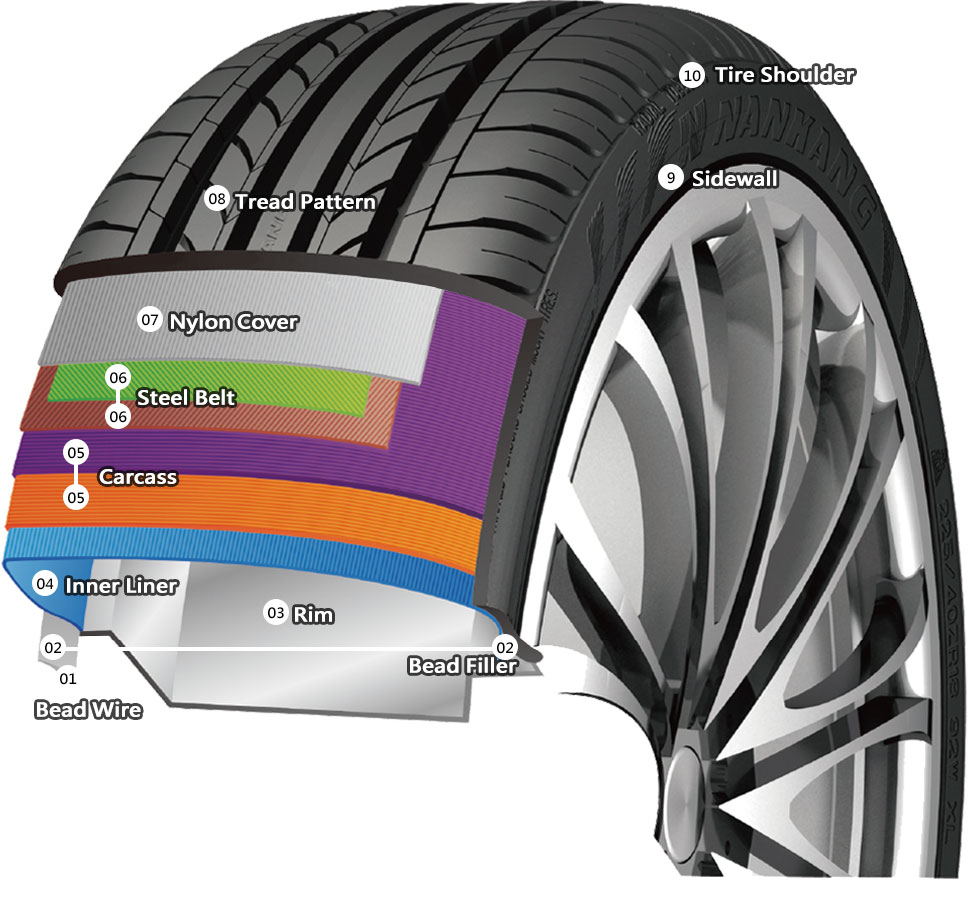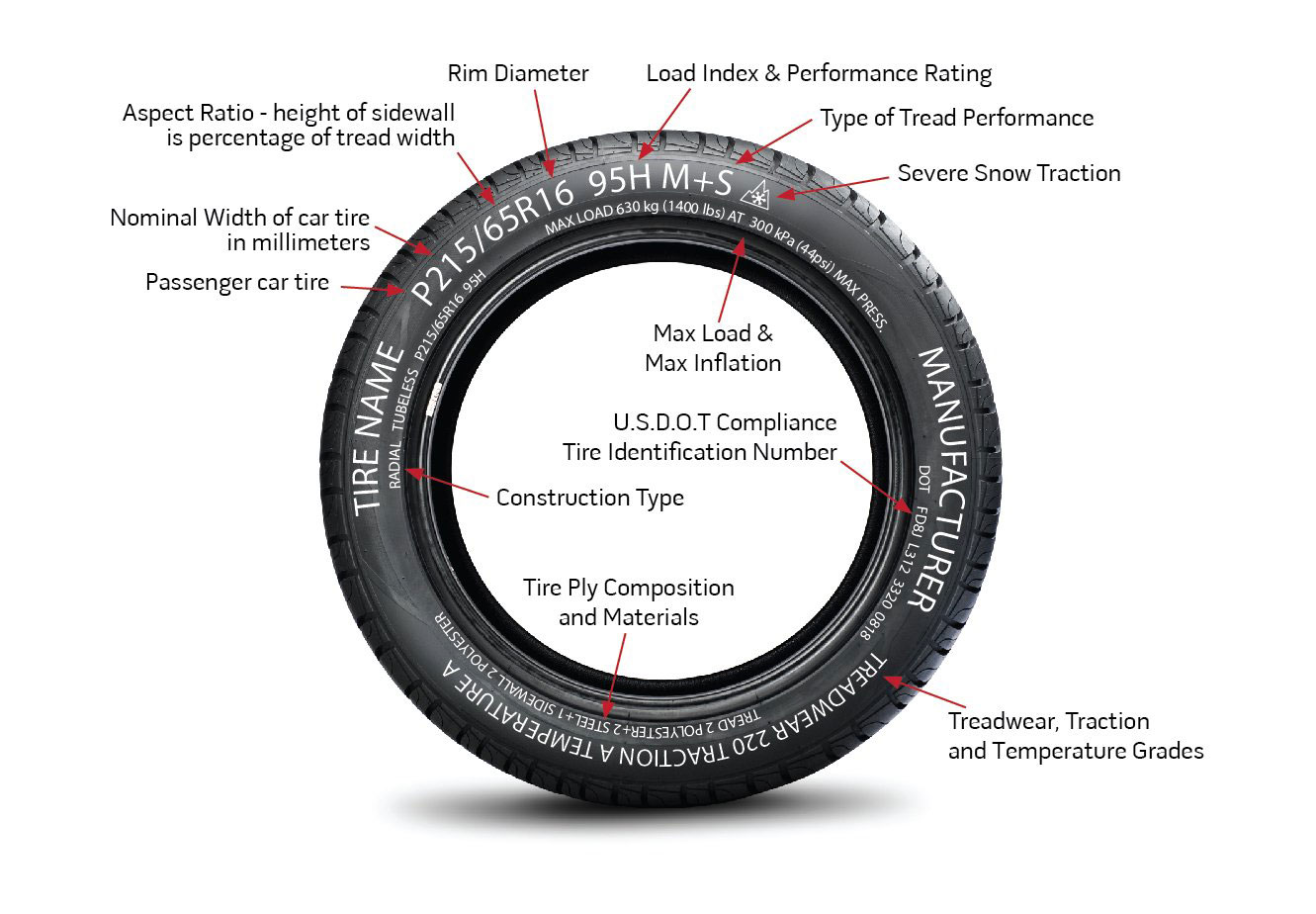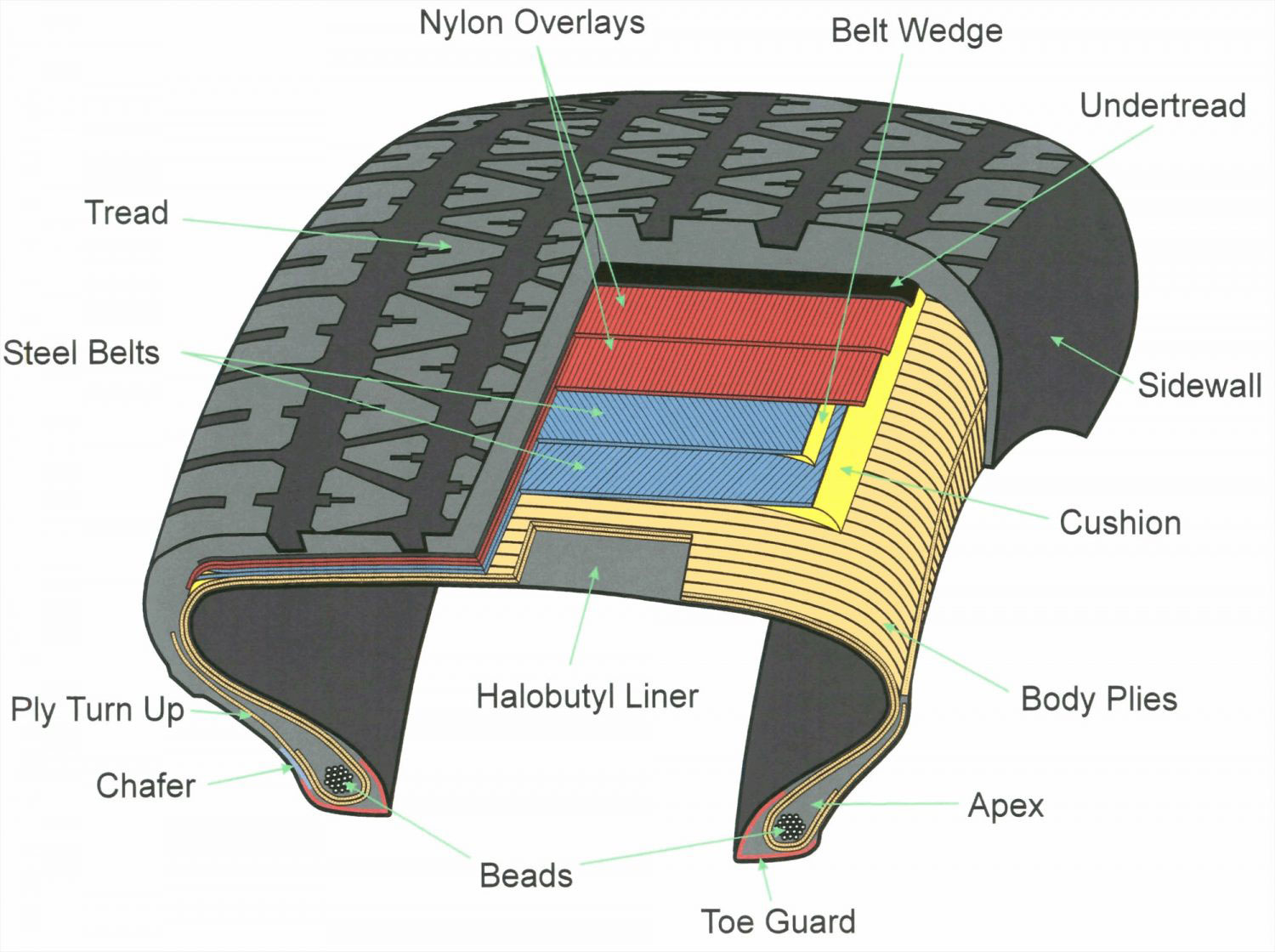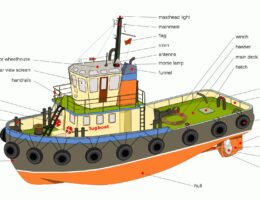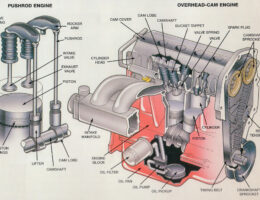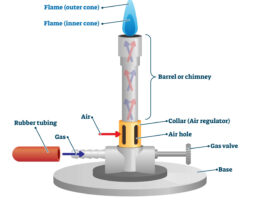- Tread: The tread is the part of the tire that comes in contact with the road. It is designed to provide traction, grip, and stability to the tire.
- Sidewall: The sidewall is the vertical part of the tire that extends from the tread to the bead. It contains information about the tire, such as the tire size, load rating, and speed rating.
- Bead: The bead is the part of the tire that sits on the rim of the wheel. It is made up of a strong steel cable that provides structural support to the tire and helps to keep it securely in place on the rim.
- Belt: The belt is a layer of high-strength steel or other materials that are wrapped around the tire’s carcass. It provides reinforcement to the tire and helps to prevent punctures and other types of damage.
- Carcass: The carcass is the main body of the tire, made up of layers of rubber-coated cords or plies. It provides the structure and support of the tire and helps it to resist deformation under pressure.
- Inner liner: The inner liner is a layer of rubber that is placed inside the tire to help it hold air. It also acts as a barrier to prevent air from escaping through the tire’s sidewall.
- Shoulder: The shoulder is the part of the tire that connects the sidewall to the tread. It is designed to provide stability and support to the tire during cornering and other maneuvers.
- Grooves: The grooves are the channels in the tread that help to channel water and other debris away from the tire’s surface. This helps to maintain traction and prevent hydroplaning on wet roads.
- Sipes: Sipes are small cuts in the tire’s tread blocks that help to improve traction on slippery surfaces. They provide additional biting edges for the tire to grip the road and improve handling and braking performance.
Overall, the tire is an essential component of a vehicle, providing traction and stability on the road, as well as shock absorption and a comfortable ride for passengers.
